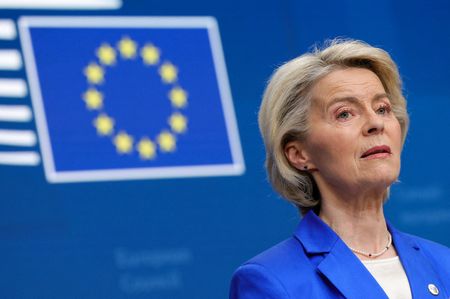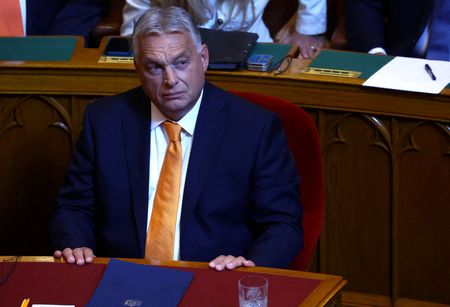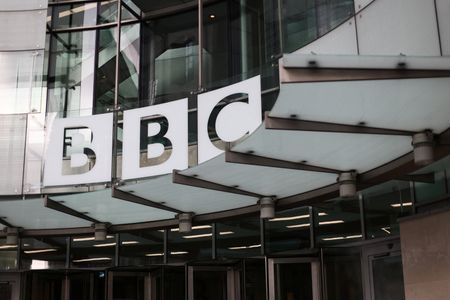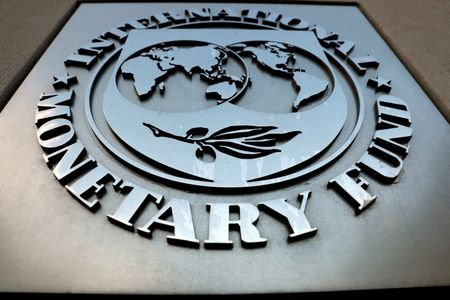By Lili Bayer
BRUSSELS (Reuters) -European Commission President Ursula von der Leyen said in a letter to European Union governments on Monday that there are three options for meeting Ukraine’s financing needs, including a loan using frozen Russian assets, but a combination of them is also possible.
EU leaders agreed last month to meet Ukraine’s “pressing financial needs” for the next two years but stopped short of endorsing a plan to use frozen Russian assets to fund a giant loan to Kyiv, due to concerns raised by Belgium.
Leaders from all EU countries except Hungary asked the Commission to come up with options for financially supporting Ukraine.
“We have identified three main options, i.e. support to be financed by Member States via grants, a limited recourse loan funded by the Union borrowing on the financial markets, or a limited recourse loan linked to the cash balances of immobilised assets,” von der Leyen said in the letter, seen by Reuters.
In an options paper attached to the letter, von der Leyen added that “the three options are not mutually exclusive. They can be combined or sequenced”.
“Given the urgency of the situation, varying complexity of the options, and the need to start disbursements by the second quarter of 2026, any selected option could be designed as transitional and time limited,” she said in the paper.
As one example, the paper said the option of non-repayable support financed by member countries and the option of EU borrowing on the financial markets “could serve as bridging solutions” until the bloc’s new long-term budget, which comes into effect in 2028, is adopted and could serve as a guarantee for EU-funded loans.
The document estimated that Ukraine’s remaining need for 2026-2027 amounts to 135.7 billion euros. The Commission’s proposal to use frozen Russian assets would produce a loan of 140 billion euros, covering Kyiv’s needs.
If a grant option is selected, Ukraine would need at least 90 billion euros for the next two years from EU members, the paper said.
In her letter, Von der Leyen told European capitals that a quick decision is needed.
“It will now be key to rapidly reach a clear commitment on how to ensure that the necessary financing for Ukraine will be agreed at the next European Council meeting in December,” she said.
Of the 135.7 billion euros required over the two years, Ukraine would need 83.4 billion just for its military and 52.3 billion for other expenses, according to the paper.
The needs would be bigger in 2026, totalling 71.7 billion, and smaller in 2027, amounting to 64 billion.
Von der Leyen’s letter met with a mixed reception in Brussels.
“It is a step forward after two steps back,” said one EU diplomat, who spoke on condition of anonymity.
A second EU diplomat said that “we think it’s good the Commission is pushing hard the sense of urgency” but that a loan using frozen Russian assets is “the only sensible” option.
But other diplomats said they doubted the paper represents significant progress toward a speedy decision.
Speaking to reporters during a visit to Brussels on Monday, Finnish President Alexander Stubb said he hopes for a quick solution.
“I think a lot of European leaders have understood the concerns that Belgium has in this situation, both political and legal, and I hope that when leaders start moving towards the European Council in December, that solutions will be found,” he said.
(Reporting by Lili Bayer and Jan Strupczewski; Editing by Andrew Gray)











